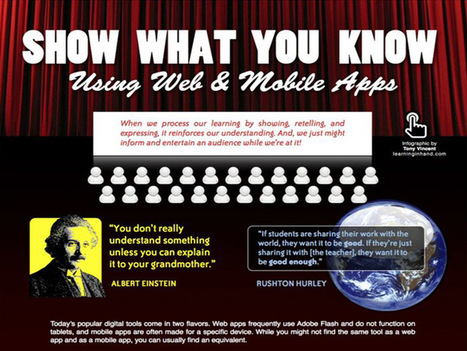Get Started for FREE
Sign up with Facebook Sign up with X
I don't have a Facebook or a X account

 Your new post is loading... Your new post is loading...
 Your new post is loading... Your new post is loading...
|
Beth Dichter's curator insight,
May 26, 2014 8:47 PM
Have you considered having students use the Adobe Voice app (iPad) to create materials that others may use to review work? This post shares how one school has done this with 8th grade students and provides 3 videos embedded in the post as well as a link to a page where you can see more student work. The post also discussed "four key proficiencies" that students may demonstrate as they create an Adobe Voice video: * Symbolic and visual metaphor - in choosing images and/or icons and their definitions of words students are demonstrating understanding of figurative meaning. * Narrative - students narrate their story and provide images that seamlessly move from one point to another within the story. * Text- students select key text, highlighting vocabulary. * Design - students learn critical elements necessary to convey content. Elements may include, music, images, voice, color, transitions, layout and more. |











adicionar a sua visão ...